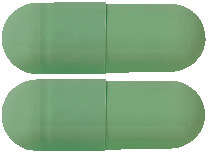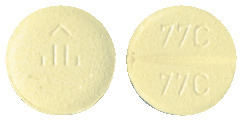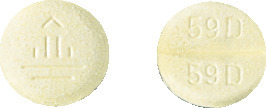SUMMARY CMI
Mobic®
Consumer Medicine Information (CMI) summary
The full CMI on the next page has more details. If you are worried about using this medicine, speak to your doctor or pharmacist.
1. Why am I taking Mobic?
Mobic tablets and capsules contains the active ingredient meloxicam. Mobic is used to treat the symptoms of osteoarthritis and rheumatoid arthritis. For more information, see Section 1. Why am I taking Mobic? in the full CMI.
2. What should I know before I take Mobic?
Do not use Mobic if you have ever had an allergic reaction to meloxicam or any of the ingredients listed at the end of the CMI. Talk to your doctor if you have any other medical conditions, take any other medicines, or are pregnant or plan to become pregnant or are breastfeeding.
For more information, see Section 2. What should I know before I take Mobic? in the full CMI.
3. What if I am taking other medicines?
Some medicines may interfere with Mobic and affect how it works. A list of these medicines is in Section 3. What if I am taking other medicines? in the full CMI.
4. How do I take Mobic?
Follow the instructions provided by your doctor and pharmacist.
- For osteoarthritis, the usual dose of Mobic is 7.5 mg once daily.
- For rheumatoid arthritis, the usual dose of Mobic is 15 mg once daily.
Swallow Mobic whole with a full glass of water with or immediately after food.
More instructions can be found in Section 4. How do I take Mobic? in the full CMI.
5. What should I know while taking Mobic?
| Things you should do |
|
| Things you should not do |
|
| Driving or using machines |
|
| Looking after your medicine |
|
For more information, see Section 5. What should I know while taking Mobic? in the full CMI.
6. Are there any side effects?
Common side effects: aching muscles, allergic reactions, back pain, being sick, blood in the urine, burping, chest tightness, constipation, cough, cramps, dehydration, dizziness, drowsiness, excessive sweating, fatigue, feeling sick, fluid retention, flu-like symptoms, headache, heartburn, increased appetite, increased blood pressure, itching or flaking skin, joint pain, loose stools, muscle spasms/ tenderness/ weakness, pain, passing wind, reflux, runny or blocked nose, shortness of breath, sore mouth/throat, stomach upset, trouble sleeping, upper respiratory tract infections.
Serious side effects: asthma, blurred vision, heartbeat irregularities, infection, photosensitivity, rash, severe skin reactions, sharp chest pain, swelling of skin/mucous membranes/stomach/intestines/liver, ulcers, urine changes. For more information, including what to do if you have any side effects, see Section 6. Are there any side effects? in the full CMI.
FULL CMI
Mobic®
Active ingredient: meloxicam
Consumer Medicine Information (CMI)
This leaflet provides important information about taking Mobic. You should also speak to your doctor or pharmacist if you would like further information or if you have any concerns or questions about taking Mobic.
Where to find information in this leaflet:
1. Why am I taking Mobic?
2. What should I know before I take Mobic?
3. What if I am taking other medicines?
4. How do I take Mobic?
5. What should I know while taking Mobic?
6. Are there any side effects?
7. Product details
1. Why am I taking Mobic?
Mobic contains the active ingredient meloxicam. Meloxicam belongs to a group of medicines called non-steroidal anti-inflammatory drugs (NSAIDs). These medicines work by relieving pain, swelling, and redness.
Mobic is used to treat the symptoms of:
- Osteoarthritis (OA) is a chronic disorder that causes damage to the cartilage and surrounding tissues and is characterized by pain, stiffness, and loss of function.
- Rheumatoid arthritis (RA) is an inflammatory arthritis in which joints, usually including those of the hands and feet, are inflamed, resulting in swelling, pain, and often destruction of joints.
Both diseases mainly affect the joints causing pain and swelling.
Although Mobic can relieve the symptoms of pain and inflammation, it will not cure your condition.
2. What should I know before I take Mobic?
Warnings
Do not take Mobic if you are allergic to:
- meloxicam, or any of the ingredients listed at the end of this leaflet. Always check the ingredients in section 7 to make sure that you can take this medicine.
- Aspirin or any other non steroidal anti inflammatory drugs (NSAIDs).
Do not take Mobic if you:
- Are under 18 years of age
- Are pregnant or think you may be pregnant (see Pregnancy and Breastfeeding)
- Are breastfeeding (see Pregnancy and Breastfeeding)
- Are going to have or have just had heart bypass surgery
- Have galactose intolerance (a rare genetic condition)
- Have a hole in or experience bleeding from the stomach, gut or any other bleeding
- Have uncontrolled heart failure
- Have severe liver problems
- Have severe, non-dialysis kidney disease
- Have had a stroke due to a bleed in the brain
- Have a stomach ulcer
- Have or have had inflammation of the stomach lining
- Have an inflammatory bowel disease such as Crohn's disease or ulcerative colitis now or in the past
- Are taking any of these medicines:
- fluconazole (a medicine used to treat fungal infections) or
- certain sulfur antibiotics (e.g. sulfamethoxazole)
- methotrexate (a medicine used to treat diseases of the immune system and some cancers). - Had any of the following reactions after taking aspirin or an NSAID:
- asthma
- nasal polyps (painless growths inside the nose or sinuses)
- swelling of the face, lips, mouth, tongue or throat (which may cause difficulty in swallowing or breathing)
- hives or an itchy rash.
Tell your doctor if you have:
- any allergies to other medicines, foods, preservatives, or colours
- a current infection
- advanced or chronic kidney disease
- any problems with your
- heart or blood vessels
- liver
- blood pressure - fluid retention
- diabetes
- high cholesterol
- any clotting or bleeding disorder
- asthma.
During treatment, you may be at risk of developing certain side effects. It is important you understand these risks and how to monitor for them. See additional information under Section 6. Are there any side effects?
Pregnancy and breastfeeding
Speak to your doctor if you intend to become pregnant or breastfeed.
Tell your doctor immediately if you become pregnant while taking Mobic.
Birth control
Tell your doctor if you are using an intrauterine device (IUD) to prevent pregnancy. NSAID medicines, like Mobic, may decrease the effectiveness of the birth control device.
Children and adolescents
The safety and effectiveness in adolescents or children younger than 18 years have not been established.
3. What if I am taking other medicines?
Tell your doctor or pharmacist if you are taking any other medicines, including any medicines, vitamins or supplements that you buy without a prescription from your pharmacy, supermarket or health food shop.
Some medicines may interfere with Mobic and affect how it works. These include:
- other non-steroidal anti-inflammatory drugs (NSAIDs): aspirin, celecoxib, diclofenac, etoricoxib, ibuprofen, indometacin, ketoprofen, mefenamic acid, naproxen, piroxicam, rofecoxib, salicylates, or sulindac.
- warfarin or heparin, medicines used to thin the blood
- furosemide, other diuretics or medicines used to treat high blood pressure
- Amiodarone or quinidine, two medicines used to treat fast, slow or irregular heart beats
- Ciclosporin, a medicine used to treat inflammatory conditions suppress the immune system
- Ketoconazole and itraconazole, medicines used to treat fungal infections
- Erythromycin, a commonly used broad-spectrum antibiotic
- Lithium, a tablet used to treat mood disorders
- Cortisone, dexamethasone, prednisolone, prednisone, or any other steroid medicine used to treat inflammatory conditions (e.g. skin rashes or asthma)
- Pemetrexed, a medicine injected into a vein that is used to treat some lung cancers
- Sulfonylureas, oral medicines used to treat diabetes
- citalopram, escitalopram, fluoxetine, fluvoxamine, paroxetine, or sertraline, medicines used to treat depression and anxiety (called SSRIs).
Medicines that may reduce the effect of Mobic include:
- Cholestyramine, a medicine used for lowering blood fats (cholesterol).
Check with your doctor or pharmacist if you are not sure about what medicines, vitamins or supplements you are taking and if these affect Mobic.
4. How do I take Mobic?
How much to take
The dose depends on your condition and any medicines that you are taking.
Follow the instructions provided by your doctor and pharmacist and take Mobic until your doctor tells you to stop.
Osteoarthritis (OA)
The usual starting dose for osteoarthritis is 7.5 mg, taken as a single dose each day. Depending on your response, your doctor may increase the single daily dose to 15 mg.
Rheumatoid arthritis (RA)
The usual dose for rheumatoid arthritis is 15 mg taken as a single dose each day. If needed, your doctor may reduce the single daily dose to 7.5 mg.
Ask your doctor for more information if you have been advised to take a different dose.
Patients with kidney problems undergoing dialysis should not take more than 7.5 mg each day.
Do not exceed the maximum recommended daily dose of 15 mg.
How to take Mobic
Swallow Mobic whole with a full glass of water with or immediately after food. This may help reduce the risk of getting an upset stomach.
When to take Mobic
Take Mobic once a day, at about the same time each day. Taking it at the same time each day will help you remember when to take it.
If you forget to take Mobic
If you miss taking your dose at the usual time, and it is 2-3 hours before your next dose, skip the dose you missed and take your next dose when you are meant to.
Otherwise, take it as soon as you remember, then go back to taking it as you would normally.
Do not take a double dose to make up for the dose you missed.
If you are not sure what to do, ask your doctor or pharmacist.
If you have trouble remembering to take your medicine, ask your pharmacist for some hints.
If you have taken too much Mobic
If you think that you have taken too much Mobic, you may need urgent medical attention.
You should immediately:
- phone the Poisons Information Centre
(by calling 13 11 26), or - contact your doctor, or
- go to the Emergency Department at your nearest hospital.
You should do this even if there are no signs of discomfort or poisoning.
The symptoms of an overdose may include:
- nausea and/or vomiting
- headache
- drowsiness and/or dizziness
- blurred vision
- fits or seizures
- fainting, feeling weak, light-headed, tired, confused and having blurred vision (signs of low blood pressure)
- difficulty in breathing
- being unaware of what happens to you or around you
- changes in amount of urine, fluid retention, confusion, and/or nausea.
5. What should I know while taking Mobic?
Things you should do
If you are going to have surgery, tell the nurse, surgeon, or anaesthetist that you are taking Mobic. Mobic can slow down blood clotting and put you at risk of bleeding.
Keep your medical appointments so that your progress can be monitored.
Your doctor may want to perform tests now and then to detect any side effects, such as anaemia.
Tell any healthcare professionals who treat you that you are taking this medicine.
Continue taking Mobic for as long as your doctor tells you.
Talk to your doctor or pharmacist if you do not feel any better after several days of taking Mobic.
Things you should not do
Do not stop taking your medicine or lower the dosage without speaking to your doctor first.
Things to be careful of
Tell your doctor if you get an infection while using Mobic. Mobic may hide some of the signs of an infection, such as pain, fever, redness and swelling. You may think, mistakenly, that you have improved or that the infection is not serious.
Driving or using machines
Be careful before you drive or use any machines or tools until you know how Mobic affects you.
Mobic may cause dizziness or blurred vision in some people. If you have any of these symptoms, do not drive, operate machinery or do anything else that could be dangerous.
Looking after your medicine
Store Mobic in a cool dry place where the temperature stays below 25°C.
Store Mobic away from moisture, heat or sunlight; for example, do not store it:
- in the bathroom or near a sink, or
- in the car or on window sills.
Keep it where young children cannot reach it. A locked cupboard at least one-and-a-half metres above the ground is a good place to store medicines.
Getting rid of any unwanted medicine
Return Mobic to your pharmacist for safe disposal if:
- your doctor tells you to stop taking it or
- the pack has expired or
- the packaging is torn/shows signs of tampering.
6. Are there any side effects?
All medicines can have side effects. If you do experience any side effects, most of them are minor and temporary. However, some side effects may need medical attention.
See the information below and, if you need to, ask your doctor or pharmacist if you have any further questions about side effects.
Less serious side effects
| Less serious side effects | What to do |
General problems:
| Speak to your doctor if you have any of these less serious side effects and they worry you. |
Serious side effects
| Serious side effects | What to do |
Gut and bowel:
| Call your doctor straight away, or go straight to the Emergency Department at your nearest hospital if you notice any of these serious side effects. |
Very serious side effects
| Very serious side effects | What to do |
Signs of a stroke
| Call an ambulance (dial 000) at once if you experience these side effects. |
Tell your doctor or pharmacist if you notice anything else that may be making you feel unwell.
Other side effects not listed here may occur in some people.
Reporting side effects
After you have received medical advice for any side effects experienced, you can report side effects to the Therapeutic Goods Administration online at www.tga.gov.au/reporting-problems. By reporting side effects, you can help provide more information on the safety of this medicine.
Always make sure you speak to your doctor or pharmacist before you decide to stop taking any of your medicines.
7. Product details
This medicine is only available with a doctor's prescription.
What Mobic tablets contain
| Active (main) ingredient | meloxicam |
| Other (inactive) ingredients |
|
| Potential allergen | lactose (as monohydrate) |
What Mobic capsules contain
| Active (main) ingredient | meloxicam |
| Other (inactive) ingredients |
|
| Potential allergen | lactose (as monohydrate) |
Do not take this medicine if you are allergic to any of these ingredients.
Mobic does not contain gluten.
What Mobic looks like
7.5 mg tablet
Pastel yellow round tablet, marked 59D on one side with break bar, and the Boehringer Ingelheim company logo on the reverse side (Aust R 77694).
7.5 mg capsule
Opaque pale green hard gelatin capsule containing a fine yellow powder (Aust R 77698).
15 mg tablet
Pastel yellow round tablet, marked 77C on one side with break bar, and Boehringer Ingelheim company logo on the other (Aust R 77695).
15 mg capsule
Opaque hard gelatin capsule, with a pale yellow body and pale green cap, containing a fine yellow powder (Aust R 77699).
Mobic tablets and capsules are packed in blister cartons containing 30, 10*, 20*, 60* (tablets only), and 100* tablets or capsules.
*Some pack sizes are not available in Australia.
Who distributes Mobic
Boehringer Ingelheim Pty Limited
ABN 52 000 452 308
78 Waterloo Road
North Ryde NSW 2113
Website: www.boehringer-ingelheim.com.au
®Registered trademark
© Copyright 2023
This leaflet was prepared in November 2023.
Published by MIMS January 2024





 Caution should be exercised when treating patients with a history of upper gastrointestinal disease and in patients receiving treatment with anticoagulants. Patients with GI symptoms should be monitored. Mobic therapy should cease if peptic ulceration or GI ulceration or bleeding occurs.
Caution should be exercised when treating patients with a history of upper gastrointestinal disease and in patients receiving treatment with anticoagulants. Patients with GI symptoms should be monitored. Mobic therapy should cease if peptic ulceration or GI ulceration or bleeding occurs. Adverse events that occurred in ≥ 1% of the Mobic treatment groups in two 12 week placebo controlled rheumatoid arthritis trials are presented in Table 3.
Adverse events that occurred in ≥ 1% of the Mobic treatment groups in two 12 week placebo controlled rheumatoid arthritis trials are presented in Table 3. Higher doses of Mobic (22.5 mg and greater) have been associated with an increased risk of serious GI events, therefore, the daily dose of Mobic should not exceed 15 mg.
Higher doses of Mobic (22.5 mg and greater) have been associated with an increased risk of serious GI events, therefore, the daily dose of Mobic should not exceed 15 mg. The data from both studies indicate that meloxicam is effective and safe for the treatment of patients with rheumatoid arthritis.
The data from both studies indicate that meloxicam is effective and safe for the treatment of patients with rheumatoid arthritis.
